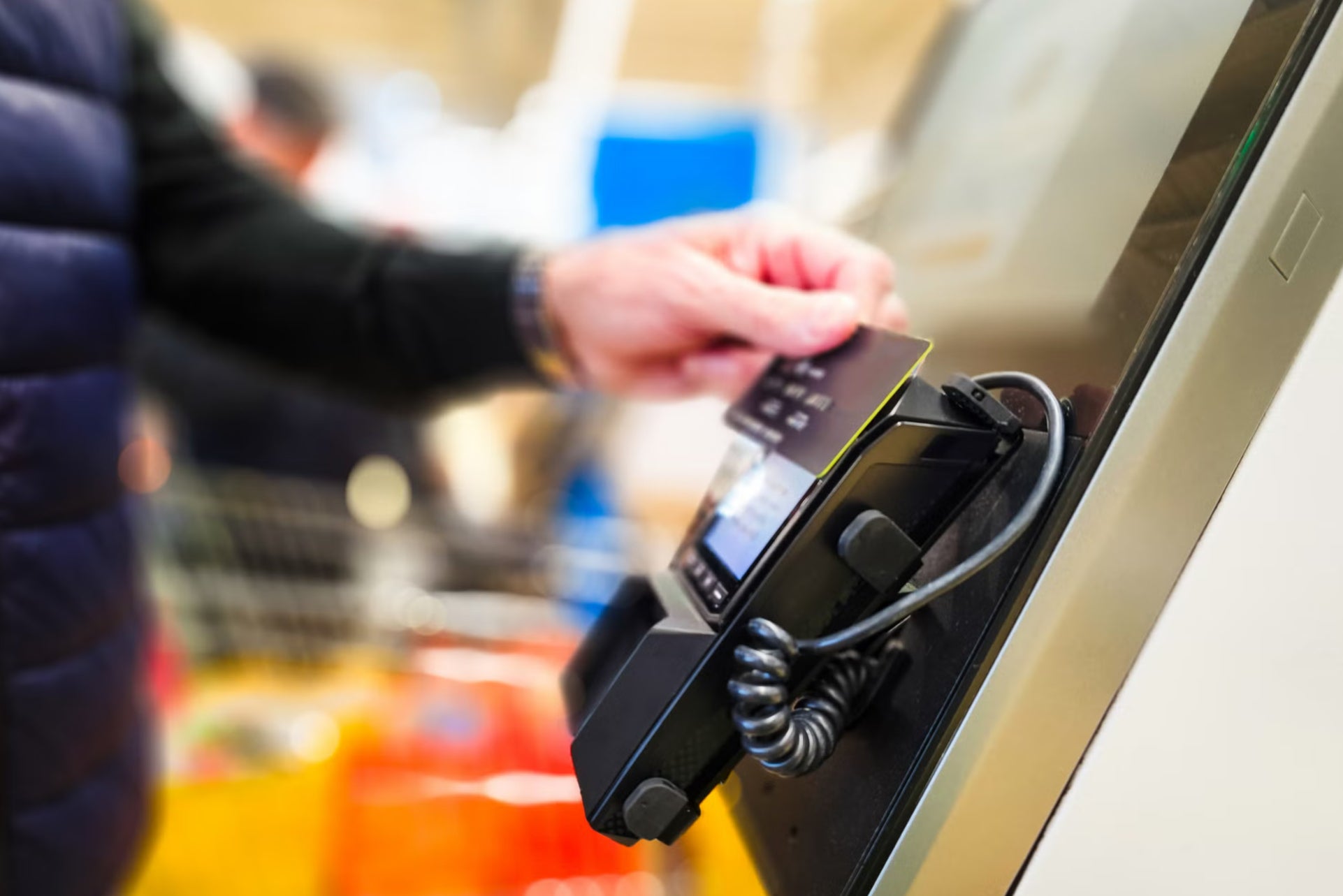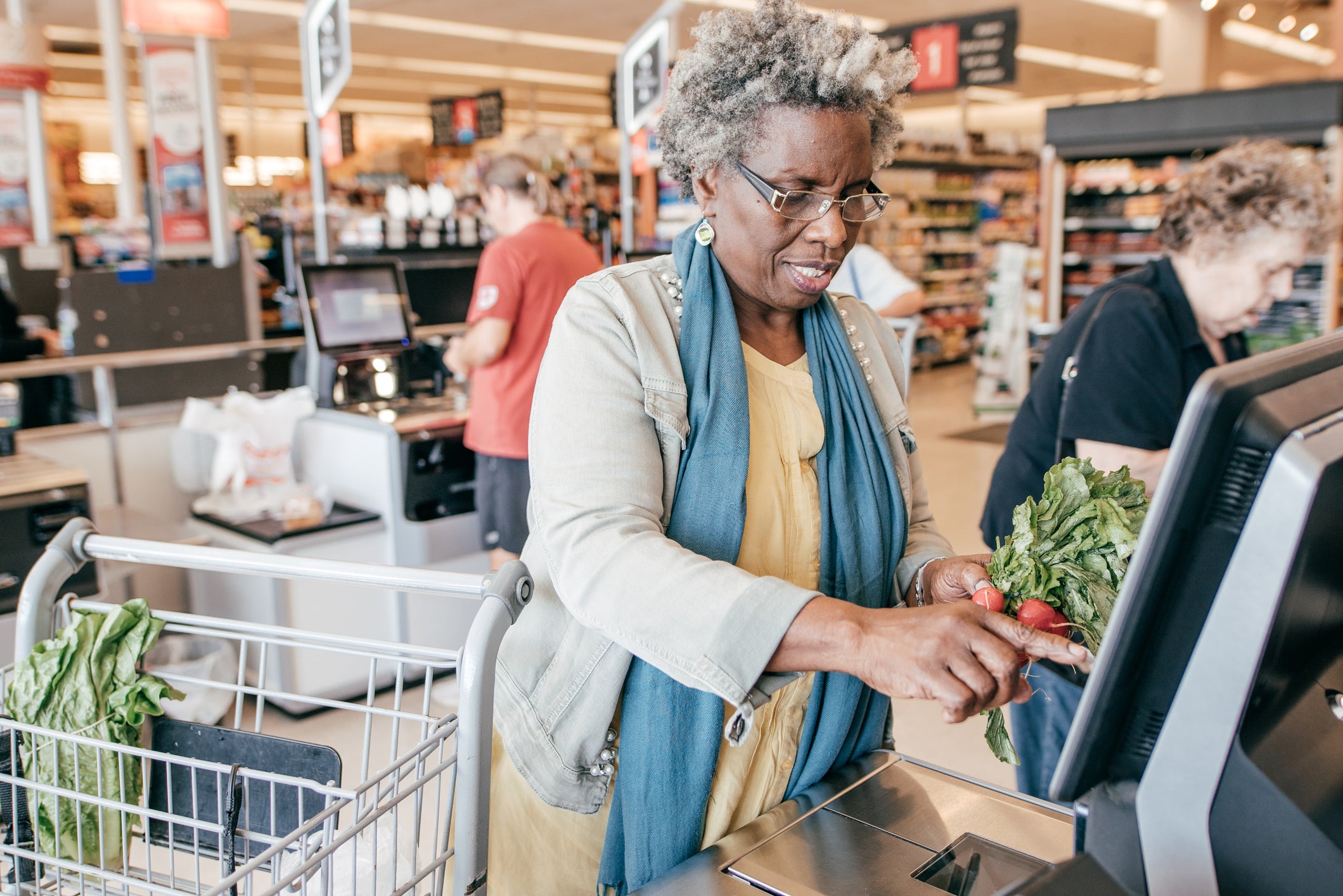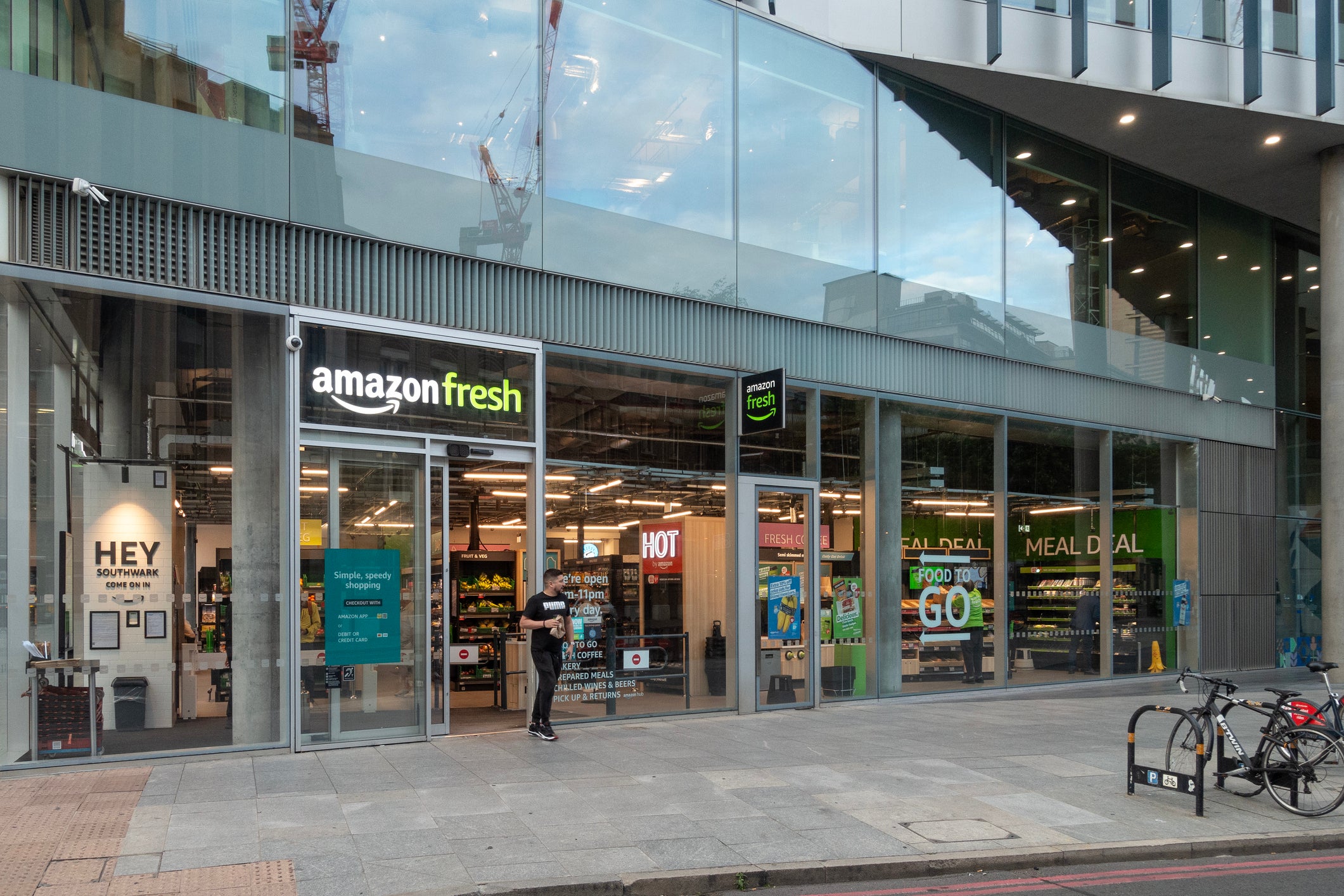The rise and fall of self-service checkouts
Have we fallen out of love with self-scanning? As Asda and Morrisons admit these checkouts might have gone too far, and amid an epidemic of ‘middle-class shoplifting’, Helen Coffey investigates whether the personal touch might be making a comeback


Your support helps us to tell the story
From reproductive rights to climate change to Big Tech, The Independent is on the ground when the story is developing. Whether it's investigating the financials of Elon Musk's pro-Trump PAC or producing our latest documentary, 'The A Word', which shines a light on the American women fighting for reproductive rights, we know how important it is to parse out the facts from the messaging.
At such a critical moment in US history, we need reporters on the ground. Your donation allows us to keep sending journalists to speak to both sides of the story.
The Independent is trusted by Americans across the entire political spectrum. And unlike many other quality news outlets, we choose not to lock Americans out of our reporting and analysis with paywalls. We believe quality journalism should be available to everyone, paid for by those who can afford it.
Your support makes all the difference.Unexpected item in bagging area.”
As you hear the five most exasperating words in the English language, you pause your scanning. Pick up the previous item. Gently put it back down.
“Unexpected item in bagging area.”
You do a different kind of scanning now, looking up and down the checkout area, searching hopelessly for a familiar flash of uniform that means help is coming. Nothing.
Eventually the cavalry arrives, harried and grim-faced, to stab at the screen until the overzealous robot is appeased. You exchange tight smiles. They disappear to attend to the multitude of other beleaguered shoppers.
You scan the next item.
“Unexpected item in bagging area.”
And on and on it goes, round and round, forever and ever, ad infinitum.
It wasn’t supposed to be this way. When the concept of self-service checkouts was first devised in the 1980s, it was with the vision of a utopian shopping experience where consumers could breeze in and out at speed. The notion struck David R Humble, president of an electronics company, while he was waiting in line at a Florida grocery store. The story goes that the cashier was being so slow that a frustrated customer in front of him grabbed the scanner and started doing it himself – and thus a revolutionary idea was born.
The first prototype took a reported three years and $5m to develop, before being installed in a Kroger store in Atlanta, Georgia, in July 1986. However, they didn’t become widely popular until around 20 years later. By 2013, there were 191,000 worldwide. In 2023 alone, 217,000 new terminals were delivered across the globe, up 12 per cent year on year, according to a report from RBR Data Services. “The pandemic hit and it ballooned due to the lack of labour in the store and because shoppers wanted to distance themselves,” says “Supermarket Guru” Phil Lempert, an expert analyst on consumer behaviour and marketing trends. Global installations are predicted to reach two million by 2029.
In the UK, the trend travelled from supermarkets to brands like Boots and WH Smith, and is now even a staple at fast-food outlets including McDonald’s and Leon. There’s no sign of the onslaught slowing down.

Clearly, there are benefits for both purveyor and consumer. Retailers save money on staffing – only needing one or two workers to oversee 10 checkouts, for example, rather than one cashier per till. Shoppers usually save time – lines are shorter and move more quickly and transactions can be done at speed (barring the “unexpected item” hoopla).
And yet there has been some dissent of late. In 2022, more than 240,000 shoppers signed a petition calling for Tesco to “stop replacing people with machines”. Last year, Booths, the upmarket supermarket chain found in the north of England, declared it was scrapping nearly all its self-scanning stations in favour of staff-operated tills in response to customer feedback.
“We believe colleagues serving customers delivers a better experience and the vast majority of Booths customers are not just happy we have removed self-checkouts, but grateful,” a spokesperson told The Independent nine months on.
More recently, both Asda and Morrisons expressed reservations. The former pledged to put more staff on manned checkouts after acknowledging it had reached a natural ceiling with self-service tills – “I think we have reached a level of self-checkouts and scan-and-go where we feel that works best for our customers, and we feel we’ve got the balance just about right,” Michael Gleeson, Asda’s chief financial officer, said in August – while the latter is “reviewing” the number of self-scan terminals with a view to replacing some with staffed alternatives.
“Morrisons went a bit too far with the self-checkout,” chief executive Rami Baitiéh admitted to The Telegraph last month. “This had the advantage of driving some productivity. However, some shoppers dislike it, mainly when they have a full trolley.”
The vast majority of customers are not just happy we have removed self-checkouts, but grateful
Lempert gives an emphatic “no” when asked whether self-scan has delivered on what it promised; while he admits there are still a number of people who prefer self-checkout when buying six items or fewer, he claims “it definitely has been negative for most shoppers”.
The key is in recognising that there are different types of clientele with different needs, according to Lorraine Gamman and Jeffrey Doruff of Central Saint Martins. “There will always be people who want to go fast, and those who don’t,” says Gamman, a professor of design who heads up the university’s Design Against Crime Research initiative.
Doruff, a design researcher, points to those for whom a self-scanning experience is a struggle: “It might be their age or that they just have less experience with these types of technologies and might need a lot of assistance. They might not speak English well, and maybe it’s not apparent how to navigate to a screen in a different language, if such a thing even exists. Stores with a larger local immigrant population have also found that their customers need a little more support.”
While many of us prefer the speed and ease of self-scanning – and, in fact, the lack of social interaction – for some older people, this new normal robs them of what may be one of the few opportunities for conversation, however brief, in their day. A study by UK housing authority Anchor found that one in four older shoppers find self-service supermarket checkouts intimidating and unfriendly. The study authors also claimed that it can be “quite a miserable experience” for older consumers if they don’t get to say “hello” to a single person during their shopping experience.
It chimes with other areas of life where increased digitalisation and automation has left people feeling marginalised, such as the proposed closure of up to 1,000 rail ticket offices across the UK last year. “It risks increasing levels of social exclusion for millions,” Natalie Turner, deputy director for localities at the Centre for Ageing Better, said at the time.

The Netherlands came up with a neat solution to this problem. Introduced in 2019 by Dutch supermarket chain Jumbo as part of the government’s “One Against Loneliness” campaign, Kletskassa, or “chatty checkouts”, are slow shopping lanes for customers who aren’t in a rush and would prefer to have assistance from a person. “Their needs are addressed and that need for human interaction is addressed,” says Gamman. “It’s a radical understanding of the shopping experience – that it’s a social activity as well as a commercial one.”
On the business side of things, there are few measurable economic benefits to retailers using self-checkout, according to some experts. “Rates of theft, otherwise known as ‘shrink’, are significantly higher through self-checkout lanes, especially if they are not staffed and monitored,” says Christopher Andrews, an associate sociology professor at Drew University who is researching the effects of self-checkouts in the supermarket industry. “And stores have found they cannot replace employees with self-checkout lanes because they are susceptible to errors as well as abuse [eg people purposefully not scanning items] if they are not adequately staffed.”
While it’s hard to pin down definitive numbers, retailers across all sectors have reported a major increase in shoplifting in the past five years. Theft in the US is up to three to four times higher than prior to the pandemic and food inflation. In the UK, retail losses are up by 33 per cent across all categories compared to pre-Covid levels, according to one report from Deloitte, with theft now at a 20-year high.
The cost of living crisis is in part to blame, with an uptick in professional thieves stealing to order. But self-scan has also given rise to a new brand of criminal: the middle-class shoplifter. I’ve been surprised by the number of friends and acquaintances, ostensibly upstanding citizens all, who have admitted to regularly intentionally not paying for one or two items in their shop. There’s also evidence that many are taking advantage of staff-less tills to help themselves to a “discount”. For example, many more carrots are recorded at checkout than are actually purchased in shops, says Gamman, suggesting that people are sneaking through more expensive products like avocados under the guise of a cheaper vegetable.
Sometimes, it’s to see if they can game the system. Often, it’s as a result of being frustrated with the failings or less smooth elements of the self-scan process – weighing scale breakdowns and ID checks for alcohol – coupled with a lack of staff to counteract them. This phenomenon was identified by City University criminology professor Emmeline Taylor, who coined the term “Swipers”, an acronym for “seemingly well-intentioned patrons engaging in regular shoplifting”. These people “would not steal using any other technique, they’re not interested in putting chocolate down their pants or a piece of steak in their coat”, she told The Times. But their numbers have grown substantially since the introduction of self-service checkouts.
Self-scan has given rise to a new brand of criminal: the middle-class shoplifter
The trend has been acknowledged by the chair of M&S, Archie Norman, who told The Telegraph: “With the reduction of service you get in a lot of shops, a lot of people think: ‘This didn’t scan properly, or it’s very difficult to scan these things through and I shop here all the time. It’s not my fault, I’m owed it.’”
There are ever-evolving technological solutions: better AI tools that can detect when items are put through incorrectly; the rise of completely checkout-free tech like that seen in Amazon Fresh; loyalty apps that use back-end data to identify potential thefts.
But really, it’s more and better-trained human employees who act as the best deterrents. Gamman cites the research of Adrian Beck, which found that a better consumer experience is strongly linked to brands who properly invest in staff training – assistants know the foibles of the machines, know how to interact with them quickly and how to anticipate issues. Having enough staff to properly man self-checkout tills, so that customers aren’t enduring lengthy waits when there’s a malfunction, results in a marked improvement for shoppers. And yet nearly two-thirds of supermarket staff surveyed by Beck do not believe they can cope with their allocation of machines, or can only cope when they are not busy.
“It’s not rocket science,” says Gamman. “Capable guardians are at the heart of loss prevention, and a capable guardian is someone who is trained. Having people who greet customers, having people in place to observe, is a really big crime deterrent. Technology needs to go hand in glove with a very personal approach.”
Ironically, the supermarkets that put bottom-line profits first and skimp on investing in their workers – and on hiring enough workers to begin with – risk losing more money from light-fingered customers who are fed up with bad service.
It’s all about finding the right balance between people and machines; as long as there is a segment of the public that is “willing to pay a premium for customer service, there will be stores that continue to provide it”, says Andrews. Like most technological solutions, you can’t put the genie back in the bottle. But you can properly resource the genie; give him proper training; and ensure that those who want his help and fancy a natter aren’t left out in the cold.
Join our commenting forum
Join thought-provoking conversations, follow other Independent readers and see their replies
Comments